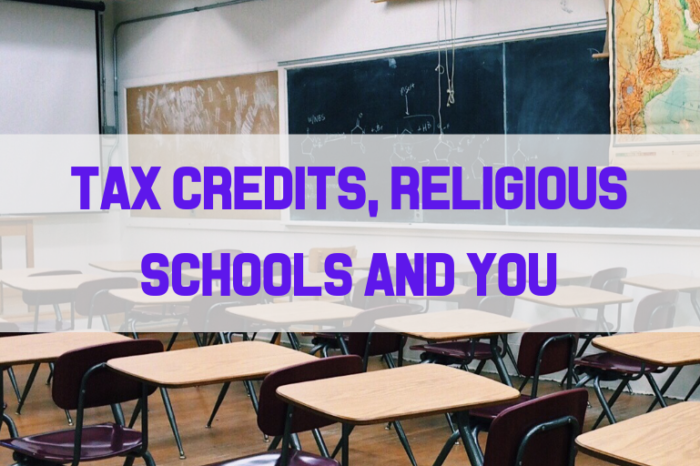Tax Credits, Religious Schools And You
This op-ed was originally published on GBH.org and the MetroWest Daily News.
Six years ago, I met with Erica Smith of the Institute for Justice in a Montana coffee shop, where I agreed to be the lead plaintiff in a lawsuit about the use of funds from a state education tax credit program for children attending religious schools. This past June, in Espinoza v. Montana Department of Revenue, the U.S. Supreme Court reversed Montana’s highest court and ruled that if parents use funds from the program to access private education, religious school options cannot be excluded.
Now the hard work begins. What will states like Massachusetts do to turn the educational opportunity the ruling offers into reality?
Education tax credit programs offer incentives to attract donations to scholarship organizations, which then distribute the money to families to help pay private and parochial school tuitions.
When Montana passed a tax credit program in 2015, I was a newly single mom seeking a better education for my daughters. In public school, one daughter was bullied and the other struggled academically. Both would later thrive in a religious school. But when Montana’s Supreme Court struck down the program, I was denied access to the scholarships my children badly needed.
The Montana court based its ruling on that state’s so-called Blaine Amendment, which barred public support to religious school parents. Montana is one of 37 states with similar amendments to their constitutions.
Our nation was founded with a pluralistic view of K-12 education. There was to be no state religion, but neither was there a prohibition on state or local government support for citizens exercising their own religious convictions. John Adams’ 1780 Massachusetts Constitution and several other early state constitutions clearly envisioned public support for a range of religious, private and secular school options.
That began to change in the mid-1800s, during a wave of nativism and openly anti-Catholic bigotry in reaction to large numbers of immigrants coming to Massachusetts in the wake of the Irish Potato Famine. The anti-Catholic Know-Nothing party made the commonwealth among the first states to adopt a proto-Blaine Amendment — one of the nation’s most restrictive — to block money from flowing to the Catholic schools to which many Irish immigrants sent their kids. In his concurring opinion in Espinoza, Justice Samuel Alito recounted much of the Massachusetts legal history that had been included in a Pioneer Institute amicus brief for the case.
U.S. Supreme Court Chief Justice John Roberts wrote in the majority opinion what we believe should be obvious: “A state need not subsidize private education. But once a state decides to do so, it cannot disqualify some private schools solely because they are religious.”
But the Court’s ruling doesn’t end this battle; it simply begins a new stage in the fight for the right of all parents to choose the education that is most appropriate for their children. State leaders around the country should take advantage of this historic decision by enacting legislation that makes religious liberty and school choice a reality for millions more families.
Even though Espinoza is now the law of the land, there are still legal questions surrounding religious school choice in some states, including in Massachusetts. An education tax credit program, for example, would allow many more students to attend the commonwealth’s excellent Catholic schools, which have similar demographics but consistently outperform public schools, despite spending far less. Amid the pandemic, the number of students attending Archdiocese of Boston schools has increased by 4,400, while enrollment in Massachusetts public schools has dropped by about 37,000.
Before Espinoza, nearly 300,000 largely disadvantaged students in 18 states benefited from state education tax credit programs — the overwhelming majority of which are need-based. Neighboring New Hampshire and Rhode Island already have school tax credit programs. More than 90 percent of parents with students in choice programs say they are satisfied with the programs.
There is a strong public interest in having an educated citizenry. In America’s choice-driven higher-education system, which is world renowned, states and the federal government support students with scholarships and loans whether they choose to go to Notre Dame, Yeshiva University or a public college or university. With the U.S. Supreme Court’s landmark ruling in Espinoza, it now falls to state leaders to act to bring that same excellence and opportunity to K-12 education.
Kendra Espinoza was the lead plaintiff in the U.S. Supreme Court case Espinoza v. Montana Department of Revenue.



